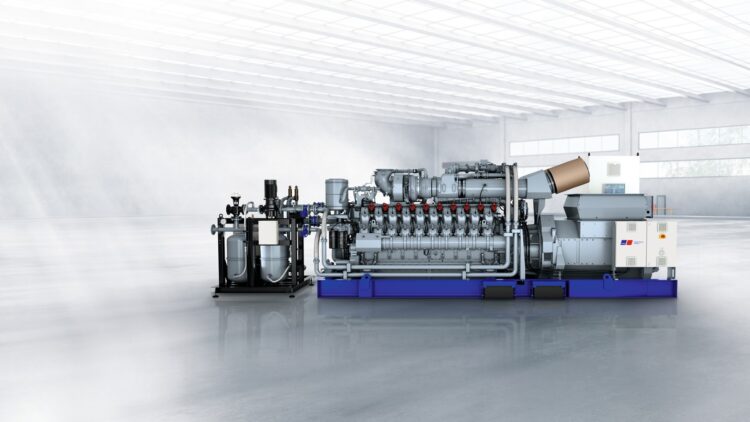In the global quest for efficient energy sources, gas engines have emerged as the world’s darling compared to traditional fuels, such as hydrogen. Expected to reach $6.3bn by 2029 from $5.1bn in 2024, the global gas engine market is catalyzed by the need for cleaner energy, especially in industrial and utility applications. This trend reveals a strong trend towards renewable and clean energy sources, which is encouraging.
Why gas engines are becoming the preferred choice over hydrogen for clean energy
Hydrogen has long been considered the ultimate fuel, but the variety and cost-effectiveness of gas engines have outperformed them in the race for the future’s clean fuel.
Hydrogen infrastructure, however, has scalability and cost challenges, and gas engines are experiencing fast technological progress. They complement efficiency, reliability, and eco-friendliness, making the gas engines respond to energy needs without similar supply complications.
Furthermore, gas engines use natural gases and hence can be implemented directly by industries and utilities interested in cutting emissions. Hydrogen production is frequently energy-demanding and still relies on fossil fuels; therefore, it is less green than initially expected.
On the other hand, gas engines can already be used for biogas and other cleaner fuels, which also augurs well for their future in the sustainable energy market.
Currently, utilities are at the forefront of using gas engines for their generation needs. These engines benefit peak shaving, grid stability, and distributed generation, including variable power system demands. This versatility extends to other applications, including cogeneration, and helps reduce emissions and improve utilities’ energy efficiency.
Another factor that enhances the utility’s appeal is government policies regarding the shift towards renewable energy and using low-emission technology. Governments of many countries are beginning to offer subsidies and incentives to utilities to produce cleaner energy, allowing the latter to cover expenses for the new equipment and materials.
Gas engines are, therefore, an avenue through which utilities can achieve emissions reductions while at the same time maintaining energy security, which makes them a vital commodity for current power systems.
Technological innovations pushing the boundaries of gas engine efficiency and sustainability
The gas engine industry has noted a technological advancement that improves efficiency and sustainability. There are interests in improving engine efficiency, decreasing emissions, and increasing fuel optionality. This means gas engines can change their fuels, including biogas and landfill gas, now considered a potential substitute for fossil fuels.
This, coupled with new engine designs and innovative manufacturing principles, is also making gas engines more reliable for high fuel price volatility and other standards on emissions. These expansions reduce the cost of operations and make the industry more competitive, particularly against other forms of clean power.
With these developments, gas engines form a product line favorable for industries requiring efficient, environmentally friendly, cheap energy sources. The Asia Pacific region is expected to hold the highest market share in the global gas engine market due to industrialization, urbanization, and an increase in energy requirements.
China, India, and Australia, to name but a few, are keen on lightening their carbon footprint, and with the help of supportive government policies, the use of gas engines is on the rise. The availability of Natural gas also supports this growth in the region, and gas engines are, therefore, both economical and renewable.
The use of gas engines will only stand to be improved due to the construction of new power plants and distributed energy systems across the Asia Pacific. Therefore, Asia Pacific nations are assisting to set the pace for the rest of the world by achieving economic gains and environmental impacts.
It is quite an ambitious market as the region plunges into infrastructure and cleaner energy plans and thus becomes a testing ground for incorporating gas engines into sustainable developmental strategies.
Challenges facing the gas engine market and the opportunities on the horizon
However, there are some issues with the gas engine, like policy risk and the fluctuation in the price of natural gas, the critical material of the gas engine. They could affect growth in areas with a weak regulatory framework or challenges in fuel supply. Further, some market infrastructure concerns can slow down the deployment rate.
However, there are opportunities to use gas as a transition fuel and incorporate bio and landfill gas into the fuel system. In this context, industries looking for sustainable solutions are set to benefit directly from the development of energy landscapes, and that is where gas engines are set to thrive.
The main long-term factors the industry will need to overcome include infrastructure and regulation, which are encouraging trends. Experts predict growth of the gas engine market up to $6.3 billion by 2029, proving that the sector is the more efficient and less risky solution.
Considering the efforts to minimize emissions and improve energy intensity, gas engines are becoming viable candidates to meet current and future demands. With the growing trends in technology and market fluctuations, gas engines may well recast the future of clean power generation, effectively out-competing hydrogen, at least for the time being.

